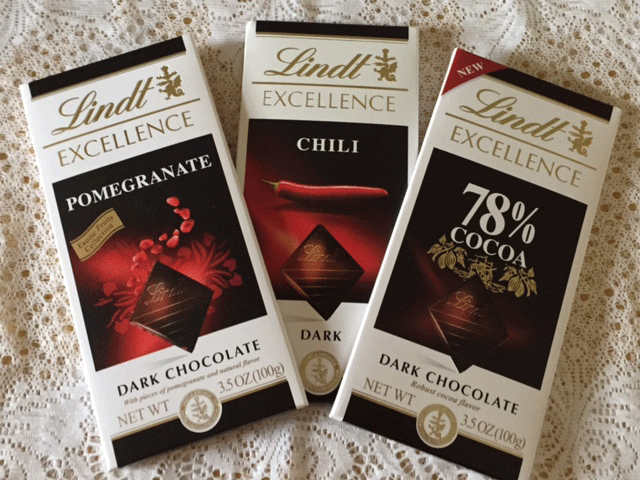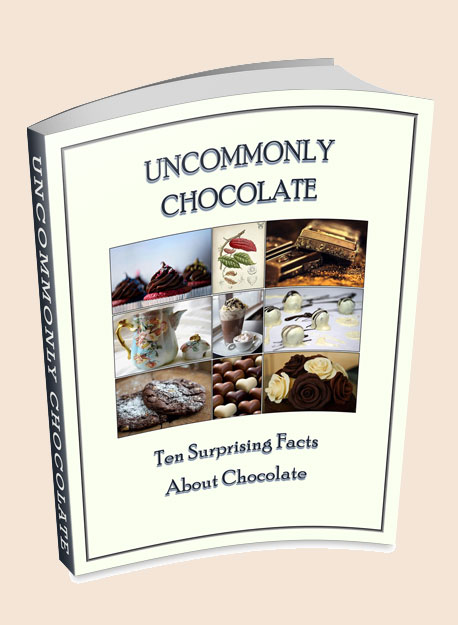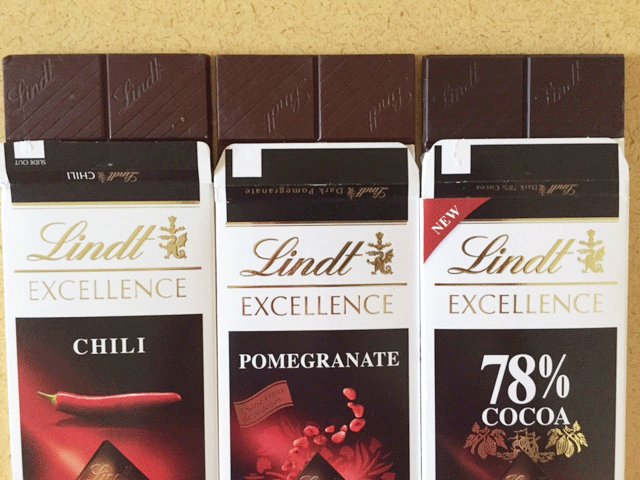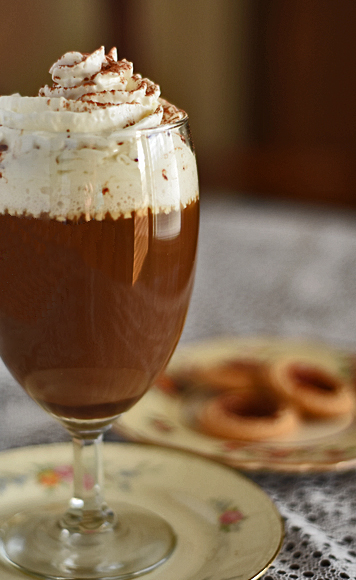Lindt Excellence
This is a review of three extremely popular Lindt Excellence bars:
But first, let me share a very brief lesson on how modern-day chocolate processing works. This will give you a better understanding of what it takes to make these delicious chocolates.

Lindt Chocolates is a world-renowned, highly respected chocolate company that has been around since it was founded in 1845 by David Sprüngli. Sprüngli and his son owned a small candy shop in Zurich, Switzerland and were the first in their country to manufacture chocolate in its solid form.
So that you have a little understanding of what they invented, here is a mini-lesson on how chocolate is made:
A brief lesson on making chocolate
Making chocolate, from bean to bar, is a long, drawn out process. Chocolate beans are harvested, separated from the pod and roasted. The roasted beans are then put through a cracking machine to break them up. Then the broken pieces are put through a “winnower” which uses blown air to separate the husks from the chocolate meats, also called “nibs.”
The nibs are put into a grinding machine which grinds them into a gritty, lumpy paste. NOW the substance is starting to look like chocolate! This paste is then put into a refining machine which consists of a heavy granite slab with granite wheels that crunch the lumpy cocoa liquor, along with any other additives like sugar and cocoa butter, into a much smoother paste.
In 1879, another Swiss chocolate maker (Rodolphe Lindt, the most famous in his day), invented the conche which is the machine which kneads the chocolate paste between two heavy rollers for anywhere from a few hours to several days. This kneading both agitates and aerates the chocolate which strongly affects the final flavor and texture.
You can tell when chocolate hasn’t been conched very long – it’ll be cheap and grainy. The smoothest, silkiest chocolates are conched for days. This is more expensive for the chocolate maker, but it results in a much higher-quality chocolate.
At this point, the chocolate is ready for tempering and molding. And voila, you have chocolate candy.
In 1899 Lindt and Sprungli merged to become “Aktiengesellschaft Vereinigte Berne und Zürcher Chocoladefabriken Lindt & Sprüngli".”
Or…Lindt, for short.
Fast forward to today, and stores everywhere carry the fine
Lindt chocolate brand, including many variations of Lindt Excellence. (You can read the full Lindt Excellence story here.)
As for the three being reviewed today…
1. Lindt Excellence 78% Cocoa – this is a rather bitter chocolate with very little sweetness. Consider that the bar is, as its name states, 78% cocoa, and you understand why. The higher the percentage of cocoa solids, the less sweet the chocolate. This one is somewhat thick and sticky on the tongue. It’s not unpleasant, it’s just strong.
Actually, it’s perfect right after taking an unpleasant-tasting
vitamin. I tend to use this chocolate to
erase the unpleasant taste and replace it with something far more desirable. Every day.
2. Lindt Excellence Pomegranate – this one is very fruity. It’s sweet, but not too much with its 47% cocoa solids. It’s lighter on the tongue and palate and contains delightfully tangy bits of pomegranate. It’s a good eating chocolate for “just because.”
3. Lindt Excellence Chili – this one is a treat. It, too, contains 47% cocoa solids, and it’s slightly sticky on the tongue and palate. This chocolate is full of surprises. The chili extract isn’t noticeable until you swallow it, at which point the heat “blooms” on the back of the tongue and throat. Surprisingly, the chili itself doesn’t really affect the flavor, it’s the final heat upon swallowing that gives the chocolate it’s very pleasant taste. Definitely my favorite.
Give these chocolates a try. They're "grocery store" chocolates, but they're quite good, and very affordable. You won't be sorry.

Need a little more chocolate in your life?
Sign up for monthly "Chocolate Chips" and receive this e-booklet FREE
"Ten Surprising Facts About Chocolate"
Sign up below and you'll receive a link where you can download your e-booklet immediately.
You might also like...
More Chocolate!
Get this 10-pg. booklet FREE when you sign up for Uncommonly Chocolate's monthly "Chocolate Chips."

Recent Articles
-
The Elusive Perfect Chocolate Cake
I’ve spent a lifetime looking for the perfect chocolate cake – cocoa flavored, moist, dense yet tender, with a true fudge icing. Who knew it was right under my nose all along? -
Hot Chocolate
Hot chocolate drinks are a natural choice for cold weather. Alcoholic or not, they are sure to keep you warm on frosty evenings. Here are a few to get you started. -
Santa Fe Chocolates
Santa Fe is known for its climate and art galleries. Now come discover Santa Fe chocolates. Chocolate elixirs are a specialty, but how about chocolate covered chile peppers? -
Bourbon Chocolate Pecan Pie
Bourbon Chocolate Pecan Pie gives a new twist to an old favorite. It turns a deadly sweet dessert into a rich treat fit for royalty. -
The perfect chocolate mousse
In my perpetual quest to find the perfect chocolate mousse, I've discovered it's all about the air bubbles. -
Hill of Beans
For rich, fresh roasted flavor, you can't go wrong with A Hill of Beans coffees, both flavored and straight roasts. -
ChocZero Sugar-Free Chocolate That's Guilt-Free
Discover the wonderful taste of sugar-free chocolate that even diabetics can eat. It’s low carb and teeth-friendly, and it's even high in fiber.

